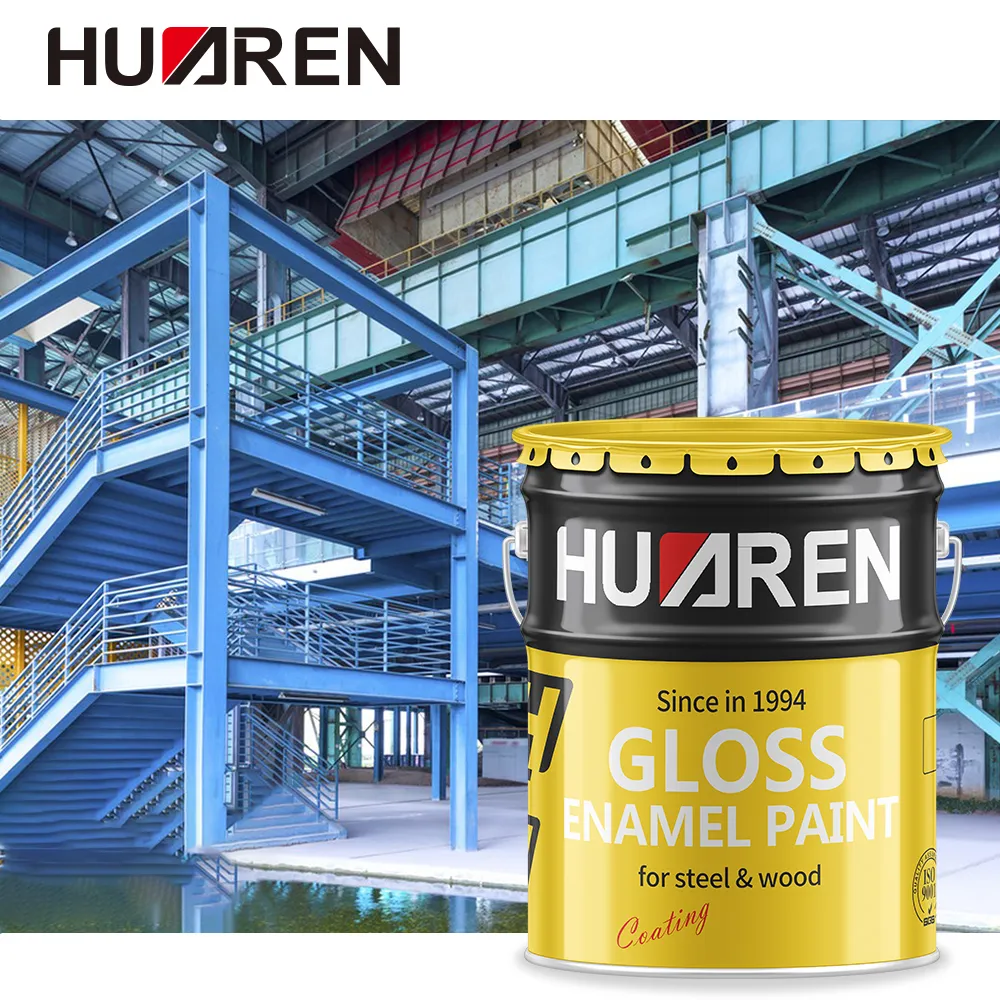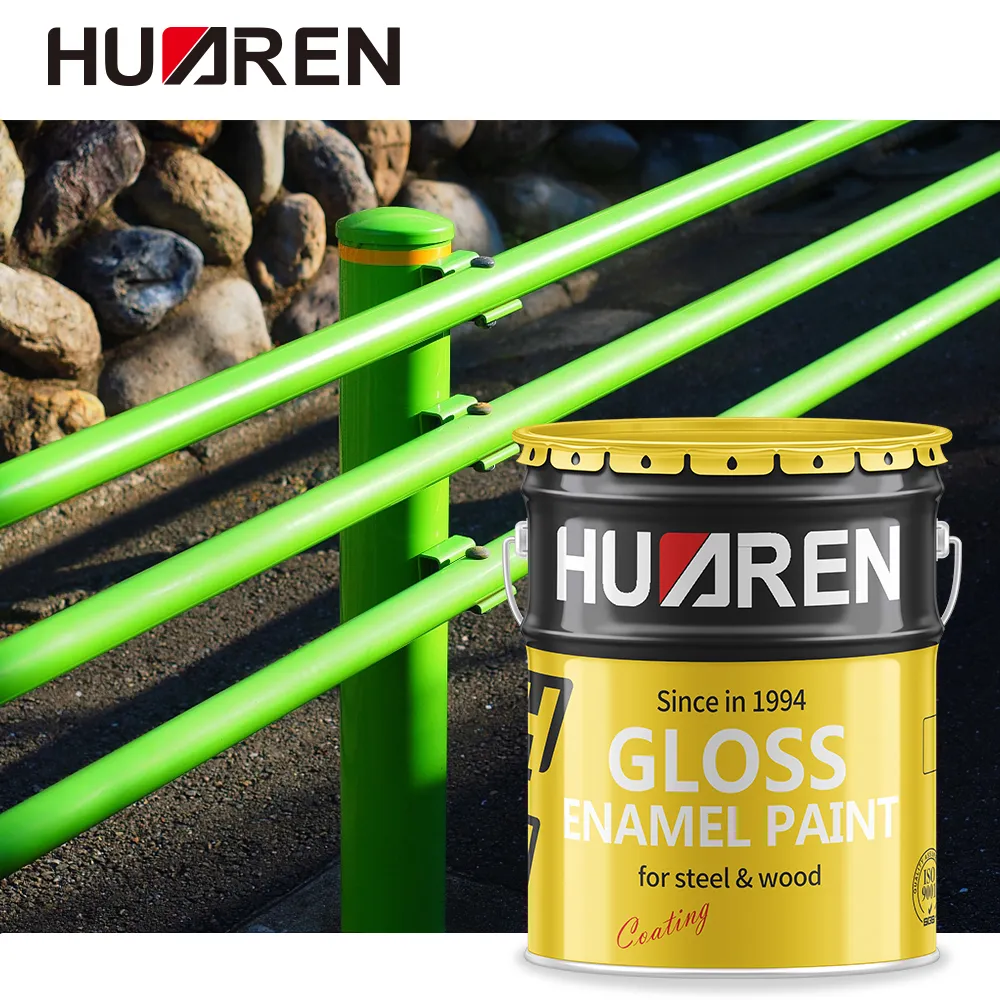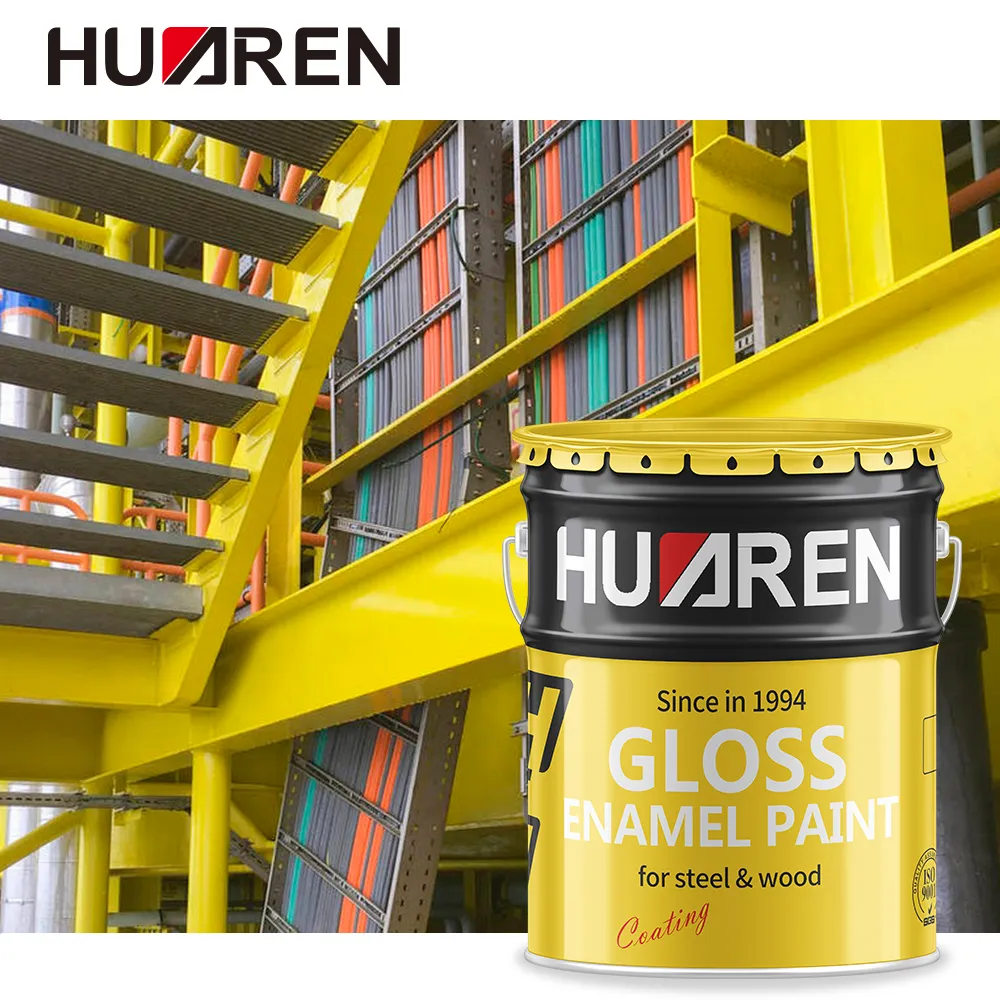Protective enamel paint is a kind of paint widely used for the protection and decoration of various surfaces. It not only provides a durable protective layer to resist the erosion of the external environment, but also has excellent decorative effects.
This article will introduce the definition, composition, characteristics, application fields and comparison with other paints of protective enamel paint in detail to help readers fully understand this common but important paint.

What is Protective Enamel Paint?
Protective enamel paint is a kind of paint with resin, pigment, filler and solvent as the main components. After it is applied to the surface, it forms a hard and smooth coating through chemical reaction or physical drying, which can effectively resist mechanical wear, chemical corrosion, moisture and ultraviolet rays. Protective enamel paint is widely used in construction, industry, transportation and household appliances.
What are the ingredients of protective enamel paint?
The main ingredients of protective enamel paint include: resin, pigment, filler, solvent and additive.
1. Resin: Resin is the film-forming substance of enamel paint, and commonly used ones are acrylic resin, epoxy resin and polyurethane resin. The choice of resin determines the hardness, gloss and durability of the paint.
2. Pigment: Pigments give paint color and hiding power, and can also enhance the anti-corrosion properties of paint. Commonly used pigments include titanium dioxide, red iron oxide and yellow iron oxide.
3. Filler: Fillers are used to improve the physical properties and construction properties of paints, and commonly used ones include talcum powder, calcium carbonate and diatomaceous earth.
4. Solvent: Solvents are used to adjust the viscosity of paints and facilitate construction. Commonly used solvents include toluene, xylene and alcohol solvents.
5. Additives: Additives are used to improve the properties of paints, such as anti-settling agents, leveling agents and ultraviolet absorbers.

What are the characteristics of protective enamel paint?
Protective enamel paint has excellent protective properties, good decorative effects, strong adhesion, strong durability and convenient construction.
1. Excellent protective performance: The coating formed by protective enamel paint is hard and dense, which can effectively resist the damage of external factors such as mechanical wear, chemical corrosion, moisture and ultraviolet rays, and extend the service life of the substrate.
2. Good decorative effect: Protective enamel paint has high gloss and rich color selection, which can provide beautiful decorative effects and improve the appearance quality of objects.
3. Strong adhesion: Protective enamel paint has good adhesion to a variety of substrates and is suitable for coating surfaces of various materials such as metal, wood, plastic and concrete.
4. Strong durability: Protective enamel paint has a long service life and can maintain stable performance and appearance in harsh environments.
5. Convenient construction: Protective enamel paint has good construction performance, is easy to brush, spray and roll, and is suitable for various construction methods.

What are the application areas of protective enamel paint?
Protective enamel paint is widely used in: construction, industrial facilities, transportation, household appliances, public facilities, etc.
1. Construction: In the construction field, protective enamel paint is used for coating walls, doors, windows, guardrails and roofs, providing long-lasting protection and decorative effects.
2. Industrial facilities: In industrial facilities, protective enamel paint is used for corrosion protection of equipment, pipelines, storage tanks and steel structures, extending the service life of equipment and reducing maintenance costs.
3. Transportation: In transportation, protective enamel paint is used for surface coating of cars, trains, ships and aircraft, providing protection and decorative effects, and improving the performance and appearance quality of vehicles.
4. Household appliances: In household appliances, protective enamel paint is used for the outer shell coating of appliances such as refrigerators, washing machines, air conditioners and microwave ovens, providing a durable protective layer and beautiful appearance.
5. Public facilities: In public facilities, protective enamel paint is used for the coating of facilities such as bridges, guardrails, road signs and lamp posts, providing protection and decorative effects, and ensuring the durability and safety of facilities.
What is the difference between protective enamel paint and other coatings?
Protective enamel paint has unique advantages and characteristics compared to other types of paint. The following is a comparison between several common paints and protective enamel paint:
1. Comparison with epoxy paint:
Epoxy paint has excellent adhesion and chemical corrosion resistance, but poor weather resistance and easy to powder in the sun. Protective enamel paint has good weather resistance and gloss, suitable for outdoor use.
2. Comparison with polyurethane paint:
Polyurethane paint has excellent wear resistance and flexibility, but high cost and complex construction. Protective enamel paint has good wear resistance and adhesion, and is easy to apply and relatively low cost.
3. Comparison with acrylic paint:
Acrylic paint has the advantages of fast drying and strong weather resistance, but poor chemical corrosion resistance. Protective enamel paint performs better in chemical corrosion resistance, and has good gloss and decorative effect.
4. Comparison with fluorocarbon paint:
Fluorocarbon paint has extremely strong weather resistance and chemical corrosion resistance, but high cost. Protective enamel paint has a higher cost-effectiveness and can provide adequate protection and decorative effects in most applications.

How to choose and use protective enamel paint?
The following factors need to be considered when choosing and using protective enamel paint:
1. Substrate type: Choose protective enamel paint with good adhesion according to the different substrates. Common substrates include metal, wood, plastic and concrete.
2. Use environment: Choose suitable protective enamel paint according to the conditions of the use environment. For example, outdoor environment needs to choose enamel paint with strong weather resistance, and chemical environment needs to choose enamel paint with good chemical corrosion resistance.
3. Construction method: Choose suitable construction methods and tools, such as spraying, rolling or brushing. Choose the appropriate enamel paint viscosity and drying time according to construction requirements.
4. Color and gloss: Choose the appropriate color and gloss according to the decoration requirements. Protective enamel paint has a variety of color options to meet different decoration needs.
5. Coating thickness: Determine the coating thickness according to the protection requirements to ensure the uniformity and integrity of the coating. Generally speaking, a coating thickness between 50-100 microns can provide good protection.
Conclusion
Protective enamel paint is a coating with excellent protective properties and decorative effects, which is widely used in construction, industry, transportation and household appliances. In practical applications, comprehensive consideration of factors such as substrate type, use environment, construction method, color and gloss can help users choose the most suitable protective enamel paint to achieve the best protection effect.

